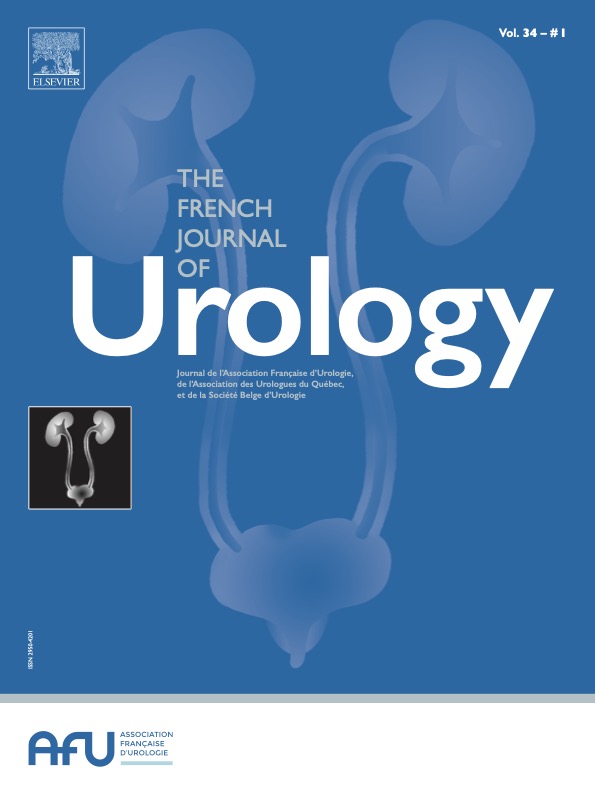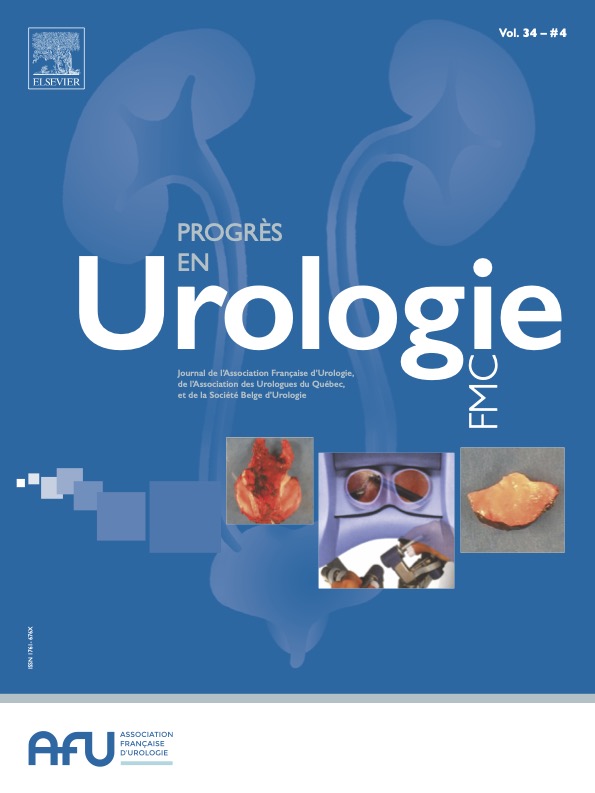Erectile dysfunction is defined as “the inability to get and/or keep an erection firm enough to permit satisfactory sexual activity”. The prevalence of erectile dysfunction varied by country, affecting between 20 and 40% of men aged between 60 and 69 years, and over 50% of those aged over 75, 150 million men worldwide are estimated to be affected by erectile dysfunction [1, 2, 3]. A major link has also been shown between erectile dysfunction and subsequent cardiac events [4].
The last observation of clinical practice study was carried out in 2004 in France [5]. We wished to evaluate the habits of urologists who have not been trained specifically in the field of sexology, in 2018. We also wanted to evaluate the need for additional, objective tools to aid physicians when providing care.
A questionnaire designed by the authors was sent from the French Urology Association to 1158 physicians between November and December 2018.
The questionnaire was divided into 2 parts, the first with clinical practice, and the second with future prospects and their feelings about the management of erectile dysfunction (Appendix A). The questionnaire was filled in anonymously and participant could answer just once.
Out of a total of 1158 questionnaires sent, 177 (15.28%) were filled in completely by the urologists. Each urologist attended a median of 70 (5;150) patients per week, out of which a median of 5 (0;30) attended specifically for erection problems. Erectile dysfunction was brought up spontaneously by the urologist in 20% of cases. The average consultation time dedicated to erections was 17minutes (estimated time by participant). Only 22% of urologists regularly used a questionnaire, such as the IIEF-5. When faced with erection problems, 56.50% of them did not carry out systematic cardiology evaluations. More than half of urologists requested fasting glucose, lipid and total testosterone levels. Twenty-seven percent did not carry out any additional tests (Table 1).
First line treatment included phosphodiesterase 5 inhibitors in 81% of cases. Behavioural therapy was added in 15% of cases. Second line treatment included local therapy either through the use of intraurethral agents, or intracavernosal injections (Table 2). Two thirds of urologists (78%) rated themselves as being correctly trained in the area of erectile dysfunction. However, only 49% systematically inquired about erection problems when faced with benign prostatic hyperplasia and 65% thought that erectile dysfunction was not treated optimally. More than 76% of urologists stated that erections were a major subject in urology and for men in the 21st century. Forty-eight percent would be willing to use an objective tool for the evaluation of erections (similar to a flowmeter for lower urinary tract symptoms).
Our study found that 7% of consultations are exclusively due to erectile dysfunction as in the ENJEU study (5.4%) [6]. In guidelines, urologist should research sexual trouble in all patients consulting for lower urinary tract symptoms [7], but only 49% of them, in our study, explore it systematically versus 16% for Droupy et al. [6]. In our study 80% of urologists told that patient spoke of their erectile dysfunction spontaneously, whereas in 2004 more than half of patients fail to discuss this subject with their doctor [5]. Maybe a change of customs has appeared over the years.
Eighty-eight percent of urologists surveyed do not use any of the IIEF (International Index of Erectile Function) questionnaire. In european Guidelines a single question may be sufficient to clarify erectile dysfuncion and questionnaire are only optional whereas questionnaire are recommended to asses sexual function in British Guidelines [8, 9]. Neijenhuijs et al question the validity of those questionnaires [10].
It has been noted by the scientific community that erectile dysfunction is an early predictor of cardiovascular events (myocardial infarction, stroke) in the 3 to 5 years after its appearance and that, in the presence of three cardiovascular risk factors, patients suffering from erectile dysfunction should undergo a complete cardiac evaluation [3, 8, 11, 12]. At a minimum, fasting glucose, lipid and testosterone levels should be requested [3, 8]. This is carried out by only half of the urologists who took part in our study. The PISTES study, carried out in 2004 found that 90% of urologists requested hormone level tests, and that 73% requested a metabolic panel [5].
In the paraclinical setting, tests such as nocturnal penile rigidity testing or penile echo-doppler tests were only used in very specific cases. Nocturnal penile rigidity testing previously allowed the users to obtain objective measures of erectile dysfunction. It is not in use anymore due to its price and lack of simplicity [13]. We found that 48% of urologists believe that a tool which would allow them to obtain objective measures of erectile dysfunction, similar to the flow-meters currently used to measure micturition problems, could help them.
When a treatment was required, most urologists use a phosphodiesterase 5 inhibitor, such as those discussed in the guidelines and in the literature [8]. Local treatment was only used as a second line treatment. The PISTES study found that behavioural therapy was more important once a distinction has been made between psychogenic and organic impotence [5].
The majority of urologists think of themselves as being adequately trained. However, The majority of them did not follow guidelines (cardiological evaluation, mesure of serum total testosterone…) we don’t explain this inconsistency.
This study was subject to a number of biases. The first one was the weak physician participation, probably due to the fact that studies involving questionnaires are quite common, with participants regularly being contacted and asked to take part in them. We sent questionnaire to all urologist without distinction, perhaps those most interested by erectile dysfunction answered more to the survey. We have also reduced the number of questions asked in order to encourage participation. This limits the analysis which can be carried out (population, age, private or public practice etc.).
Despite this, this is one of the most recent studies to be undertaken on the subject. It has highlighted the absence of adherence to the guidelines in the diagnosis of erectile dysfunction, especially the systematic carrying out of cardiovascular checks, despite the fact that the link between erectile dysfunction and vascular pathologies has been clearly shown to exist. The study also highlighted that questionnaires are not being used and that there is a desire for an additional useful clinical tool, in order to objectively classify erection problems, and thus be able to provide care which is better adapted to the patient.
Despite the guidelines, only half of urologists carry out a cardiac evaluation when a finding of erectile dysfunction is made. Less than a third use evaluation questionnaires and a third do not request any additional testing.
An objective diagnostic tool could help urologists to optimise the diagnosis, care and follow up of the patient with erection problems, and thus make early findings of cardiovascular pathologies.
The authors declare that they have no competing interest.
Appendix A. Supplementary data
 | (19 Ko) |
| |
|








